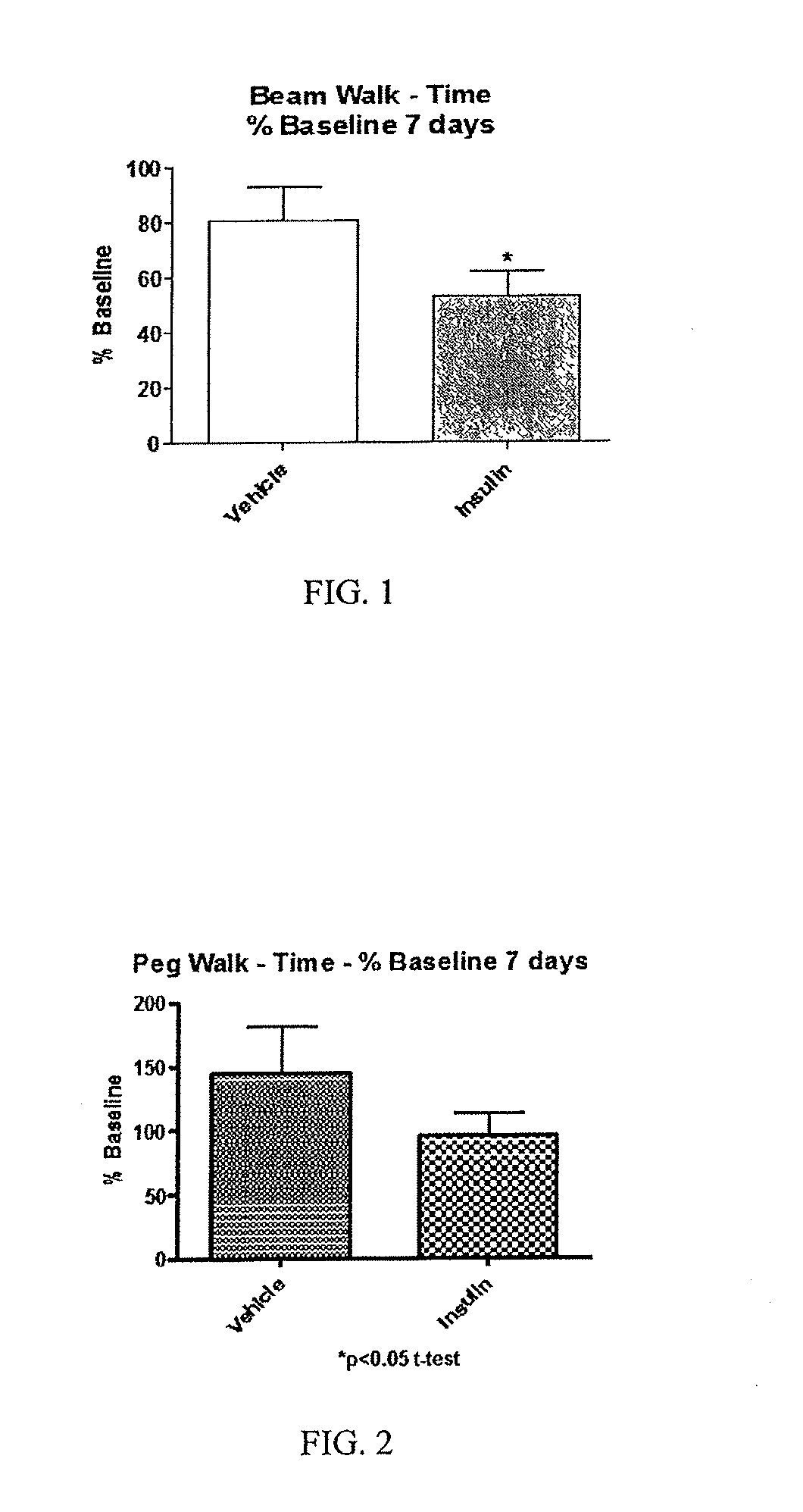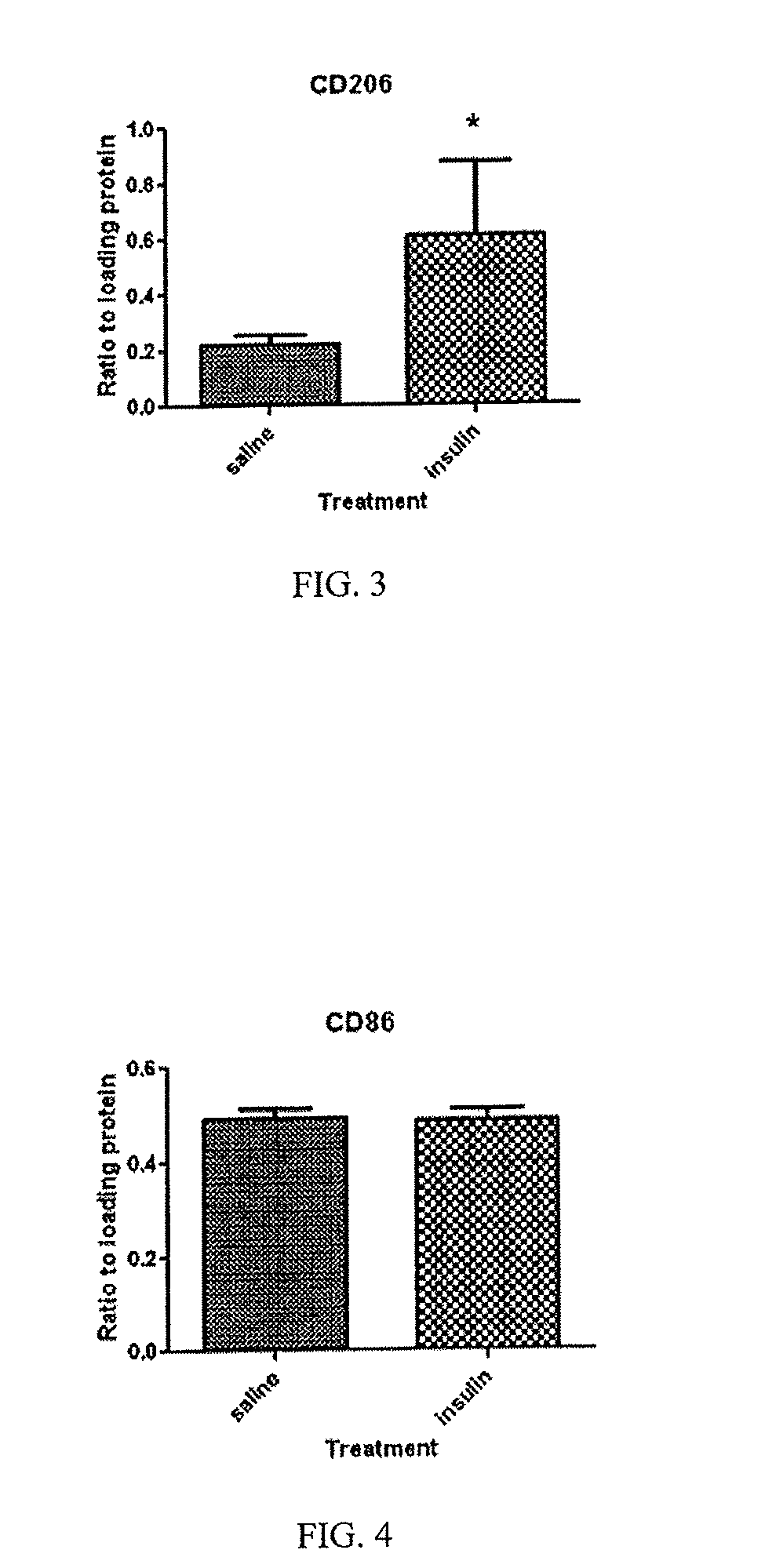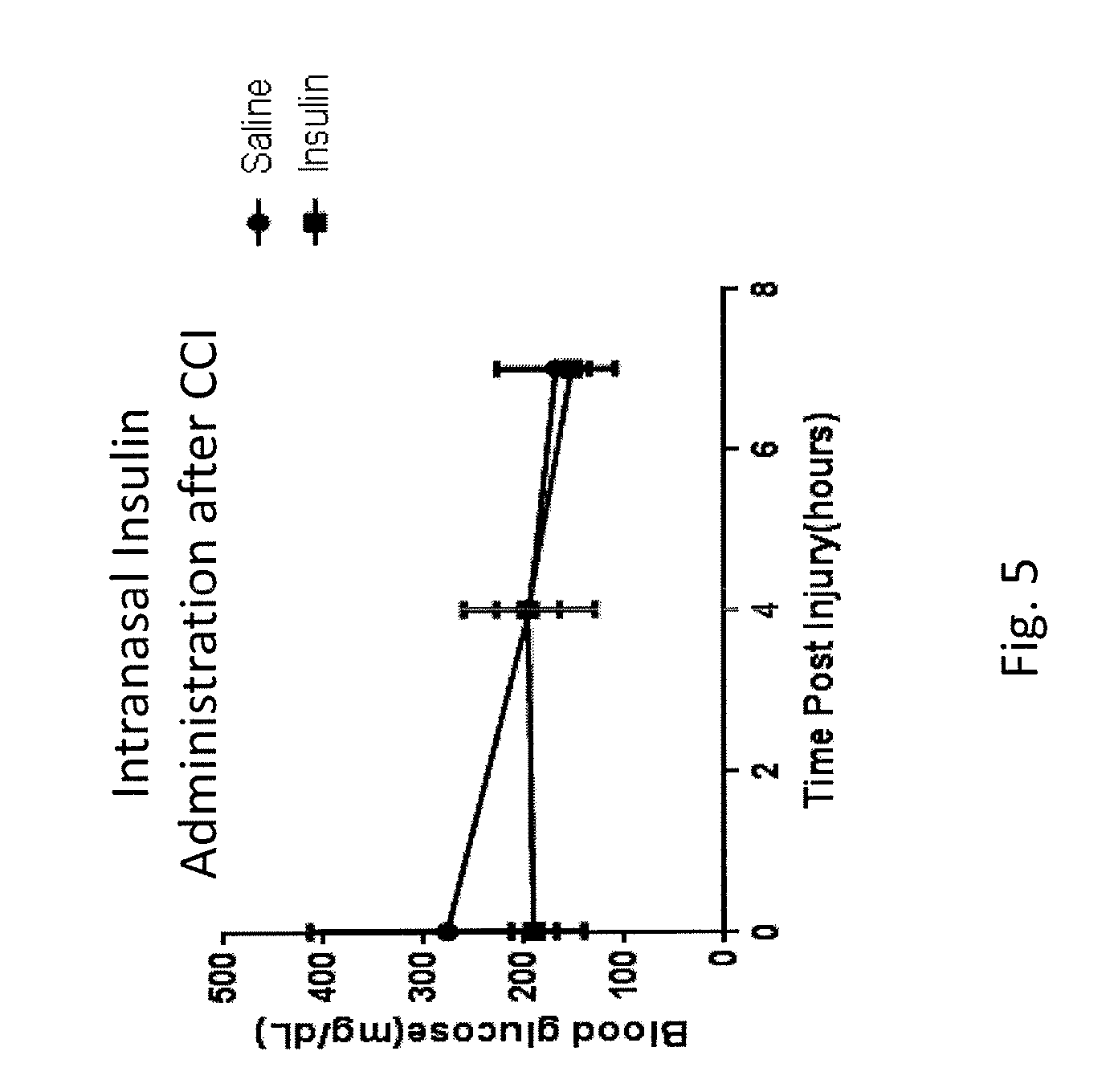Methods for protecting and treating traumatic brain injury, concussion and brain inflammation with intranasal insulin
a technology of intranasal insulin and traumatic brain injury, which is applied in the direction of peptides/protein ingredients, drug compositions, peptides, etc., can solve the problems of eye pupil dilation, eye injury, and inability to awake from sleep, so as to achieve no to minimal systemic exposure
- Summary
- Abstract
- Description
- Claims
- Application Information
AI Technical Summary
Benefits of technology
Problems solved by technology
Method used
Image
Examples
working example
[0087]In a reduction to practice of one embodiment of the present invention, a Moderate Controlled Cortical Impact Injury Model, developed for use in establishing a Traumatic Brain Injury (TBI) model was employed. In this study, adult male Sprague Dawley rats were subjected to a controlled cortical impact as that procedure is described in “A mouse model of sensorimotor controlled cortical impact: characterization using longitudinal magnetic resonance imaging, behavioral assessments and histology”. Onyszchuk G, Al-Hafez B, He Y Y, Bilgen M, Berman N E, Brooks W M. J Neurosci Methods. 2007 Mar. 15; 160(2):187-96. Onyszchuk, G., et al., J. Neurosci. Methods, 2007, 160(2): p. 187-196, the contents of which are hereby incorporated by reference.
[0088]Procedure
[0089]Following the controlled injury using the TBI model described above, the injured rats received either saline or insulin under anesthesia by isoflurane. A first dose of either saline (saline rats) or insulin (insulin rats) was d...
PUM
| Property | Measurement | Unit |
|---|---|---|
| Molar density | aaaaa | aaaaa |
| Dimensionless property | aaaaa | aaaaa |
| Concentration | aaaaa | aaaaa |
Abstract
Description
Claims
Application Information
 Login to View More
Login to View More - R&D
- Intellectual Property
- Life Sciences
- Materials
- Tech Scout
- Unparalleled Data Quality
- Higher Quality Content
- 60% Fewer Hallucinations
Browse by: Latest US Patents, China's latest patents, Technical Efficacy Thesaurus, Application Domain, Technology Topic, Popular Technical Reports.
© 2025 PatSnap. All rights reserved.Legal|Privacy policy|Modern Slavery Act Transparency Statement|Sitemap|About US| Contact US: help@patsnap.com



